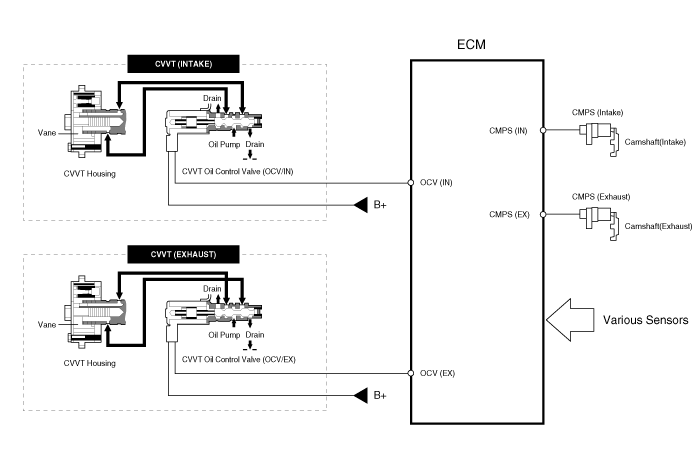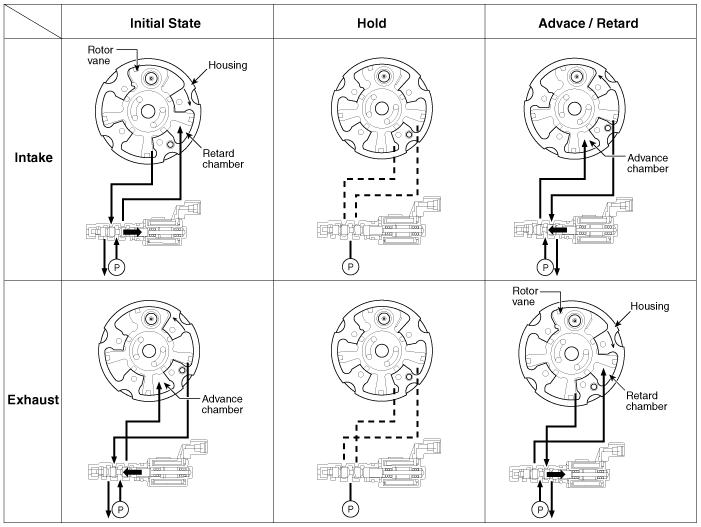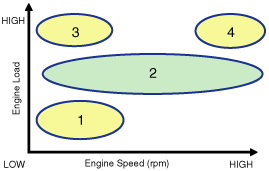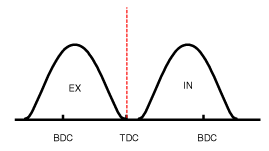Hyundai Kona: Exhaust Emission Control System / CVVT (Continuous Variable Valve Timing) System Description and operation
Hyundai Kona (OS) 2018-2025 Service Manual / Emission Control System / Exhaust Emission Control System / CVVT (Continuous Variable Valve Timing) System Description and operation
| Description |
Continuous Variable Valve Timing (CVVT) system advances or retards the valve
timing of the intake and exhaust valves in accordance with the ECM control signal
calculated by the engine speed and load.
By controlling CVVT, the valve over-lap or under-lap occurs, which makes better
fuel economy and reduces exhaust gases (NOx, HC). CVVT improves engine performance
by reducing pump loss and internal EGR effect, improving combustion stability
and volumetric efficiency, and increasing expansion work.
This system consists of :
| – |
the CVVT Oil Control Valve (OCV) which supplies the engine oil to the
cam phaser or runs out the engine oil from the cam phaser in accordance
with the ECM PWM (Pulse With Modulation) control signal,
|
| – |
the CVVT Oil Temperature Sensor (OTS) which measures the engine oil
temperature,
|
| – |
and the Cam Phaser which varies the cam phase by using the hydraulic
force of the engine oil.
|
The engine oil released from the CVVT oil control valve varies the cam phase
in the direction (Intake Advance/Exhaust Retard) or in the opposite direction
(Intake Retard/Exhaust Advance) of the engine rotation by rotating the rotor
connected to the camshaft inside the cam phaser.

| Operation Principle |
The CVVT has the mechanism of rotating the rotor vane by hydraulic force generated
by the engine oil supplied to the advance or retard chamber in accordance with
the CVVT oil control valve control.

| [CVVT System Mode] |

|
(1) Low Speed / Low Load |
(2) Partial Load |
|
|
|
|
(3) Low Speed / High Load |
(4) High Speed / High Load |
|
|
|
|
Driving Condition |
Exhaust Valve |
Intake Valve |
||
|
Valve Timing |
Effect |
Valve Timing |
Effect |
|
|
(1) Low Speed /Low Load |
Completely Advance |
* Valve Under-lap * Improvement of combustion stability |
Completely Retard |
* Valve Under-lap * Improvement of combustion stability |
|
(2) Part Load |
Retard |
* Increase of expansion work * Reduction of pumping loss * Reduction of HC |
Retard |
* Reduction of pumping loss |
|
(3) Low Speed /High Load |
Retard |
* Increase of expansion work |
Advance |
* Prevention of intake back flow (Improvement of volumetric efficiency) |
|
(4) High Speed /High Load |
Advance |
* Reduction of pumping loss |
Retard |
* Improvement of volumetric efficiency |
 GPF (Gasoline Particulate Filter) Repair procedures
GPF (Gasoline Particulate Filter) Repair procedures
GPF Regeneration
This procedures is to forcibly regenerate the GPF with scan tool when the GPF
doesn't have been regenerated during driving. For example, if the vehicle has
r ...
Other information:
Hyundai Kona (OS) 2018-2025 Owners Manual: Scheduled maintenance services
Follow Normal Maintenance Schedule if the vehicle is usually operated where none
of the following conditions apply. If any of the following conditions apply, you
must follow the Maintenance Under Severe Usage Conditions.
Repeated driving short distance of less than 8 km (5 miles) in normal
tem ...
Hyundai Kona (OS) 2018-2025 Service Manual: Transmission Gear Oil General information
General Information
1.
Check & Change intervals
Check & Replenishment
Change
Capacity
Oil specification
Normal Use
...
© 2018-2025 www.hkona.com





